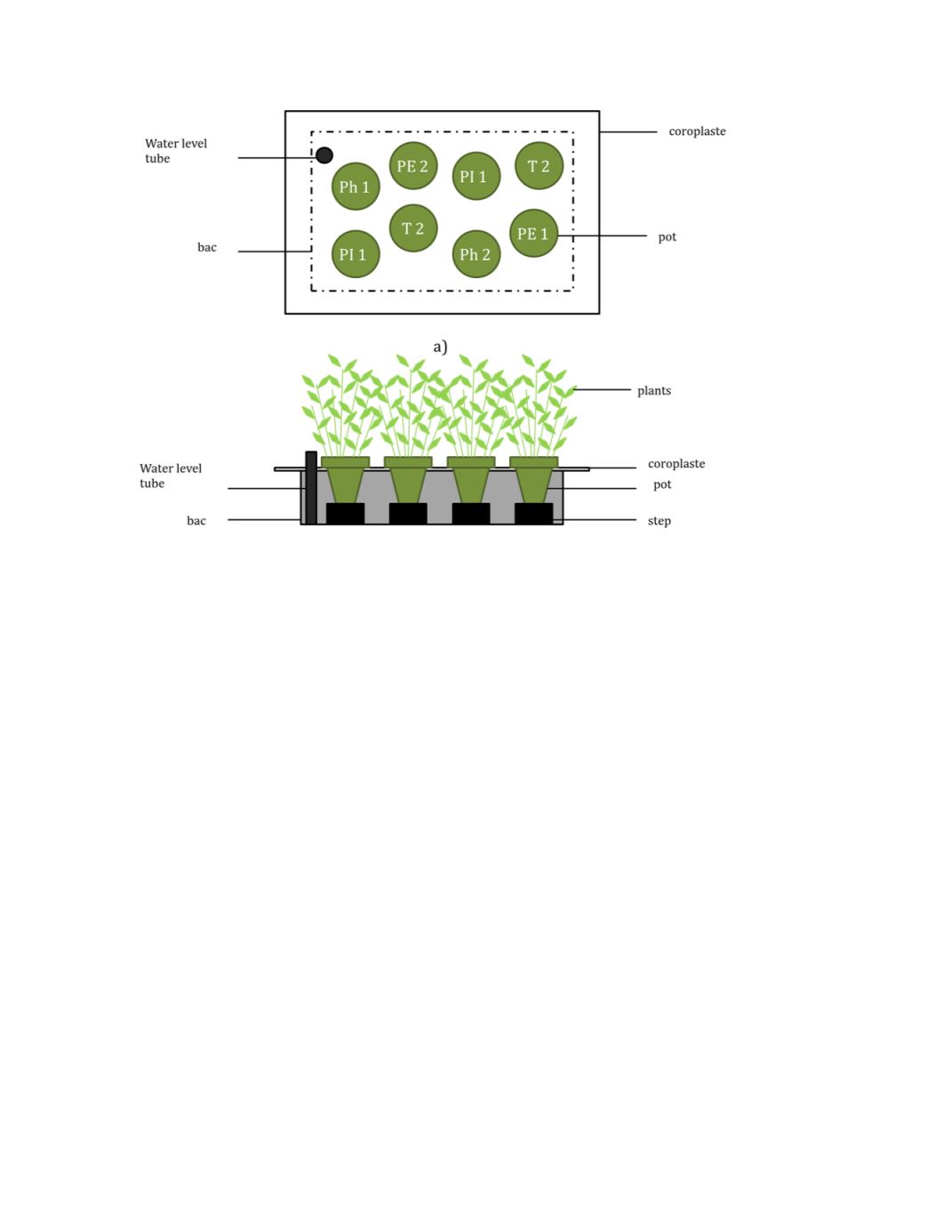
113
Figure 2: Pot experiment set up. Legend: T) Typha angustifolia. PE) Phragmites australis
australis. Ph) Phalaris arundinacea. PE) Phragmites autralis americanus. 1 and 2 are the 2
replicates.
Plant features.
In the pot experiment. leaf chlorophyll and porosity were measured every
month. Plant height (using 4 different classes from 10 to 120 cm) was measured and
number of shoots was monitored twice a month for each species exposed to every
concentration. At the end of the experiment, all above and belowground plant material was
collected and the fresh and dried biomass was weighted. For the pilot scale CW, the
maximal height. as well as the number of shoots and fructifications was noted for each
wetland at the end of the growth season. The aerial biomass was collected and weighted
fresh and dried.
Chemical analyses.
Inlet and outflow samples were collected for the four pilots. Each
sample was analysed each month during the growth season for the presence of metals,
phenolic compounds, dioxins and furans. For both pilot CW and pot experiment, the
pollutants biosorption was evaluated using plants tissue analysis.
Results and Discussion
In the pot experiment, no signs of growth loss were observed for any concentration. The
leaf chlorophyll content and porosity were not significantly different in relation with
concentration of pollutants.
For the biosorption parameters. no metals were found in the plants tissues in the pilot-scale
CW. In the pot experiment, only arsenic was detected in the roots of the four plants species.
A dose-response correlation was observed, especially with the plants from the second


